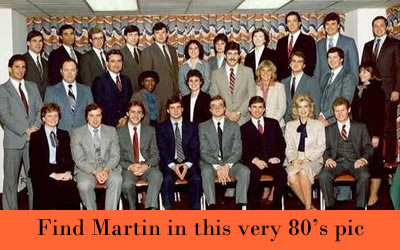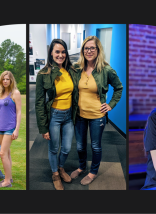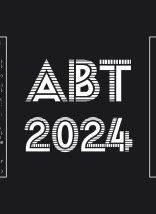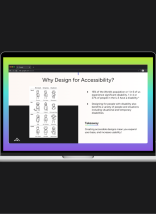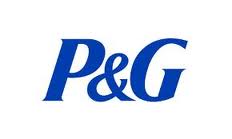
I started working for P&G (1981) when phones were on walls at home and webs were something spiders created. Networking was when we met on Fridays to exchange damaged consumer products goods. Everyone, there were salesmen and women from P&G, J&J, Campbell’s Soup, Heinz, Colgate, Crest, Lipton and Clorox was glad when I arrived. Soap was currency. Everyone needed it all the time. Bleach you could live without for a few weeks, soap not so much.
We met in a parking lot, threw our trunks open and traded damaged soap (torn wrappers mostly) for dented soup, smashed dryer sheets and crushed plastic bottles of bleach and detergent. Our early EBay auctions established preference, currency and bids. I got more for Coast than Ivory (like 3 to 1).
The market was open arbitrage. I’ll give you two bars of Coast soap for slightly abused dryer sheets, crushed bleach, and a cut but taped bottle of detergent. The rep next to me would make his offer and he might beat mine or vice versa. Coast was my best currency. I never doubled down using my best selling soap back when soap came in bars and on a rope not ubiquitous liquid. I would toss in three bars of Ivory sealing the deal. The Johnson & Johnson rep tried to cut a “better” deal using crushed bottles of Tylenol.
The first big tampering case had just happened. No one touched his pre-tamper proof bottles despite his saying, “these are from BEFORE the problem.” We felt for the guy. He’d spent days clearing shelves of his product on the off chance of tampering. Logically we knew he had to send any potentially tampered product back to HQ for accounting and then directly into the flames, but no one would touch the aspirin during my tenure.
Every now and again someone would take pity on the J&J guy. They would throw him something for Q Tips or Petroleum Jelly. Mostly he represented something we feared – strange, random madness, inflated hysteria and disorder. Barter happened on Fridays because grocers didn’t want “reps” in their stores as weekend traffic built. We had paperwork to do. Everyday I filled out a three part “Daily Call Report” that included how many FAPs (field activated promotions) I’d sold, how many calls were made and what was accomplished.
My goal was 12 sales calls a day and Friday was a “day” making our daily sales call goal 15 since Friday it was hard to make a single sales call. Everyone in the trading parking lot had similar daily goals. “Plan your work, work your plan,” P&G taught during orientation. P&G was masters at the sticky metaphor mixed with easy to remember song-like alliteration and report card-like aids. Sales presentations had four parts (Summary, Idea, How Works, Benefits). The sales call had seven distinct “steps” (don’t remember these anymore). There were hieroglyphs for describing store conditions noted inside a large notebook then transposed to our Daily Call Reports.
The Daily Call Report was almost 24 inches from left to right. When a P&G rep returned to their car he or she would pull a long board from the back seat, fit it over the steering wheel, transpose notes taken in the store and then dock the large board with pegs perfectly fitted to the company Malibu back in the backseat. They would look down at the “Daily Plan” sheet hanging from the console, drive to their next store and repeat the process selling grocery store managers displays of Downy, Bounce or Mr. Clean.
Before pitching the store manager we checked the store’s backroom. Some stores were mean about letting sales reps in the backroom. If you replaced a good sales rep there was a note indicating to ask permission before walking in the back. Entering the store we wrote our names in a long ledger probably never looked at or cared about. Once your relationship was built with Store Managers you didn’t have to sign in anymore.
Green sales reps like me in 1982 had to create a consistent rhythm. I always signed in. It seemed courteous and easy. One of my favorite managers, after about a year, said, “Martin you don’t have to sign in anymore.” By then signing in was part of the ballet, part of my process. I heard something else in his statement. I heard how pleased he was that I was following procedure despite our friendship. I continued to sign his and every store’s “call sheet”.

There was a problem. M&M’s was less organized, less regimented. Paperwork at M&M’s took Friday, some of Saturday and Sunday (on many weeks). P&G’s systems were constraining, you had to do it THEIR way. M&M’s lack of systems turned out to be more constraining. How, I wondered, could I free up my Fridays so I could attend barter town again?
Reading something or hearing something about “personal computers” I bought an Apple II. It whirled, beeped and was fun to pick through. Learning how computers worked became my second job. From 8 to about 11 almost every night after wrapping my M&M work I picked my way through Lotus, early word processing and databases.
It was fun and differentiating. I became the “computer guy” who was always “playing” with his computer. Attending training at M&M’s national office in Hackettstown, New Jersey I brought my Apple along. During a lunch break I shared what I was doing. I was smart enough to bring the computer, but doubt I planned positioning myself as “the computer guy”. Fire was the result. Once my story was out a group form up after training to see “the computer”.
I remember several, “WOWs” as people gathered close in an attempt to get close to something heard about more than seen (remember this is now 1984 the year of the famous Apple Big Brother commercial). Word of what I was doing, unbeknownst to me, traveled across the street to the “national office”. At that time an M&M’s plant and a boiler room of desks arranged begrudgingly for sales and marketing all with phones with the loudest ring tones you’ve ever heard and this is WAY before iPods).
I’d created my first meme. A meme is a sticky cultural idea that is easily passed around, easily buzzed via word-of-mouth. The personal computer meme and I fused at M&M’s national office. A very special man named Wolfgang Pfiefer called me two days later. “Martin,” Wolfgang said with the most amazing German accent, “My name is Wolfgang Pfiefer, I work in the Sales Information Group in Hackettstown and I hear you are using a computer. How are you using it?”
After a long pause I remember sharing my love for long nights huddled over spreadsheets, seeing my first graph on a monochrome dull grey monitor and how my buyer’s bought more from print outs on dot matrix printers than anything created by hand. “It is like they think my pitch is more legitimate because it is from a computer,” I explained to Wolfgang (those were the days).
“Wait there,” is what I thought Wolfgang said over the phone. “What,” I remember saying into the line. I was about to hang up and then I heard Wolfgang talking to Debbie Putz asking for a morning flight to Buffalo. “Martin,” I will be in Buffalo around 4:00 tomorrow,” Wolfgang said as I could hear Debbie speaking in the background,” can you pick me up? “Sure,” I’d said into the phone confused and unsure. “Tomorrow” was Saturday and Wolfgang didn’t say anything about my boss or his boss. “Do I need to tell Stuart,” I asked after Stuart Brownstein (my boss). “Oh….yeah and I will give him a call too,” Wolfgang said before asking me to write his flight information down.
It is rare you know when your life is about to change. This was one of those moments. I sensed momentous change within seconds of its happening. Stuart and his boss Region Director Bernie Lee were curious about my “playing” with computers and supportive as long as it didn’t interfere with my sales goals. Bernie became President of Ethel M, possibly the best chocolate made in America, a Mars subsidiary.
Within weeks of Wolfgang’s visit I was offered a job as a “Project Manager” in the Sales Information department at M&M/Mars in Hackettstown. After a year of using a primitive SQ
• Going Early and Ugly Beats Later and Perfect
• Being First Beats Being Second
• Create Sticky, Well Timed Memes
• Web Sites Are Equal To My Old trusted Apple II (necessary and capable but out gunned now see Platforms Beat Websites)
• Blue Oceans, unique ideas, are out there and even more valuable now than then (because harder to find)
• If A Guy Named Wolfgang Wants To Meet On Saturday, Always Take The Meeting
Have a great weekend.
Martin
—
Director Marketing
Martin(dot)Smith(at)AtlanticBT(dot)com
If you attended P&G training in Cincinnati 1981 / 1982 and are in this picture, please claim your spot (if not too embarrassing).
